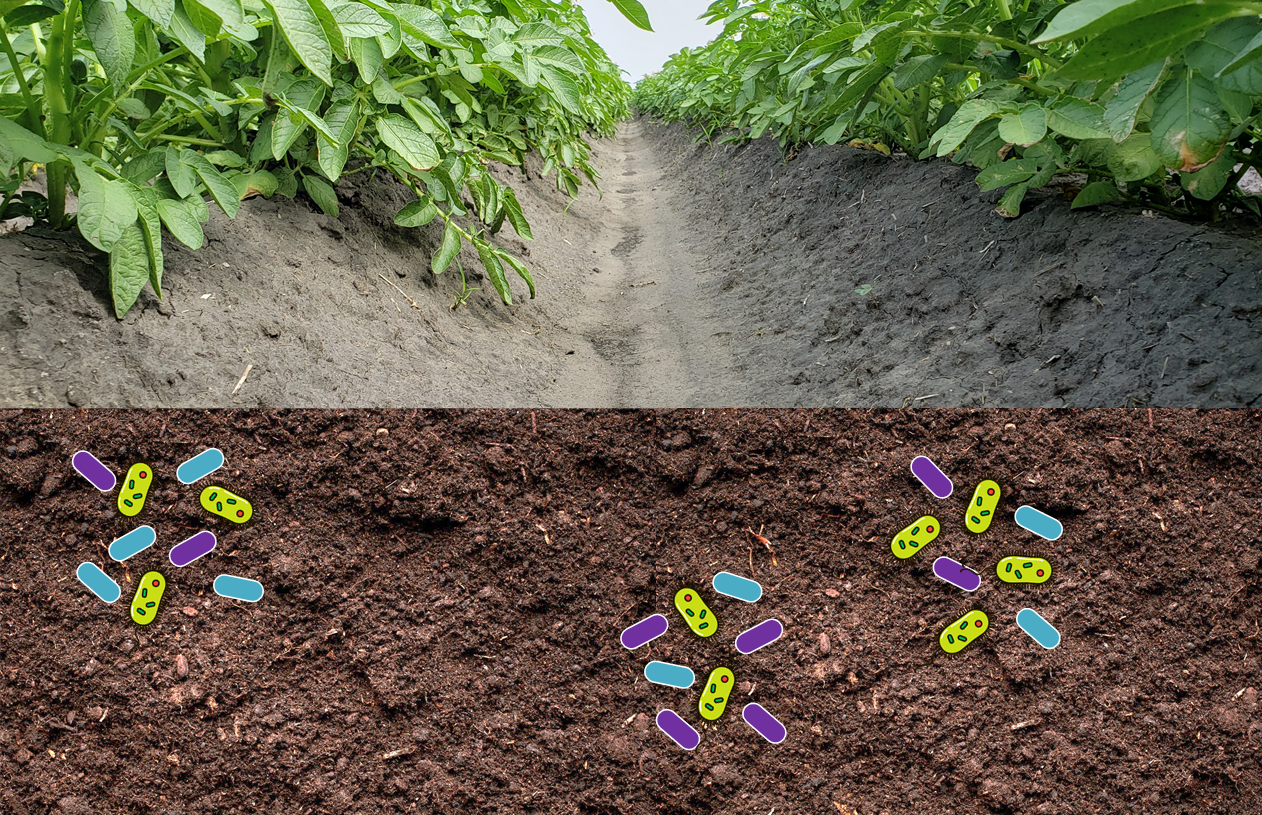A healthy soil microbe population is essential to healthy soil and a functional field, as we have previously covered, but one question we have not yet answered is this: does diversity matter? Does a diverse population of microbes make for better field conditions than a more homogenous population? (i.e. one with fewer species of microbes present). In this week’s edition of Growing Possibilities, we put diversity in the limelight and look into the benefits of a diverse soil microbe population and how it could make a difference to your crop.
Variety and diversity in your soil microbe population should be something every grower strives for, as the benefits can mean better nutrient availability and better crops. A diverse population of microbes can result in all of your soil-dwelling friends being stronger and more resilient. Different environmental stressors have different effects on different microbes, with some being able to handle certain stresses better than others. Because of this, a diverse population will be more resilient to environmental changes and keep your soil nutrient cycles moving along regardless of the state of your soil.
Many soil microbes can have direct benefits to your crop and soil conditions. Soil microbe populations often contain helpful microbes like fungi and plant growth promoting rhizobia (PGPR), which are bacteria that colonise the rhizosphere of your plants and provide nutrient and growth benefits. Helpful microbes like this increase plant growth and productivity, promote nutrient uptake and effectiveness, and/or improve abiotic stress tolerance in crops. These include nitrogen (N) fixing bacteria, mycorrhizal fungi, phosphorus & potassium solubilizers, and sulfur oxidizers living in plant rhizospheres (1). These microbes offer direct benefits to your crop, and supporting a diverse population of them can maximize the potential benefits you can receive.
Soil microbes can also offer indirect benefits in your soil. One such benefit relies on the release of extracellular polysaccharides (EPS). This is a sticky substance that many species of bacteria release when under stressful conditions such as dryness. EPS helps bacteria hold onto moisture and nutrients from their surroundings and if one or more species of bacteria around your plants’ roots emit this substance, they can help their host plant deal with this same moisture stress. EPS can prevent the desiccation of bacteria as well as surrounding plant roots, and increases soil aggregation while maintaining a high water potential close to the plant (2). The larger your population of EPS producing microbes in your soil, the stronger this mechanism becomes.
So how can you support a diverse microbe population in your soil and ensure the microbes you need are there?
Reducing tillage in your field is one important way of supporting your soil microbes. Soil microbes congregate together around nutrient resources like moisture and organic matter, forming communities called Microaggregates. These Microaggregates are where organic matter breakdown takes place, and can house species of bacteria, fungi, and even your plant roots (3). Tilling can break up these communities, disrupting the soil microbes’ abilities to turn over organic matter, release soil nutrients, and build healthy functioning communities. A study on the effects of tilling on soil microbes found that fields with no-till or reduced tillage practices had larger, more active microbial communities with greater enzymatic activity (4).
Ensuring a diverse soil microbe population is a cornerstone of keeping your fields healthy and sustainable, but you also need to ensure that this population includes any microbes your crop requires for growth. For legume growers, this means ensuring the presence of the Nitrogen-fixing rhizobia species your crop needs to create nodules. Every legume has a specific species of bacteria that it will form a symbiosis with, which means you will need to have that specific species in abundance for your crop to produces nodules and fix nitrogen. For example, soybean growers need to ensure they inoculate their crop with Bradyrhizobium japonicum to ensure nodulation occurs.
References:
1) Sudheer, S., Bai, R.G., Usmani, Z., Sharma, M. Insights on Engineered Microbes in Sustainable Agriculture: Biotechnological Developments and Future Prospects. Current Genomics 2020; 21(5)
2) Vurukonda, S., Vardharajula, S., Shrivastava, M. SkZ, A. Enhancement of drought stress tolerance in crops by plant growth promoting rhizobacteria. Microbiological Research, Volume 184, 2016, Pages 13-24,ISSN 0944-5013
3) https://www.realagriculture.com/2021/01/what-happens-to-soil-microbes-when-you-till
4) Stacy M. Zuber, María B. Villamil, Meta-analysis approach to assess effect of tillage on microbial biomass and enzyme activities, Soil Biology and Biochemistry, Volume 97, 2016, Pages 176-187, ISSN 0038-0717, https://doi.org/10.1016/j.soilbio.2016.03.011.


